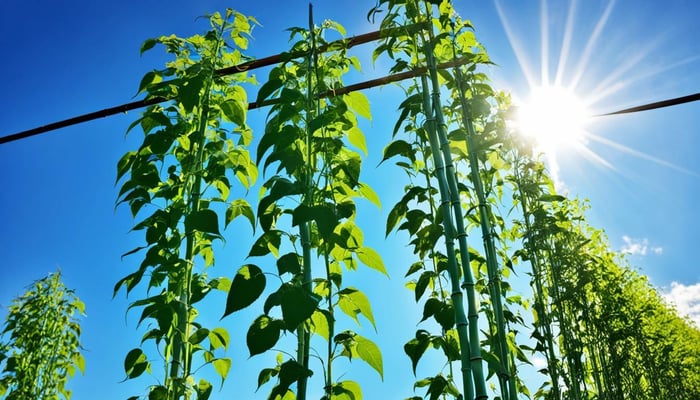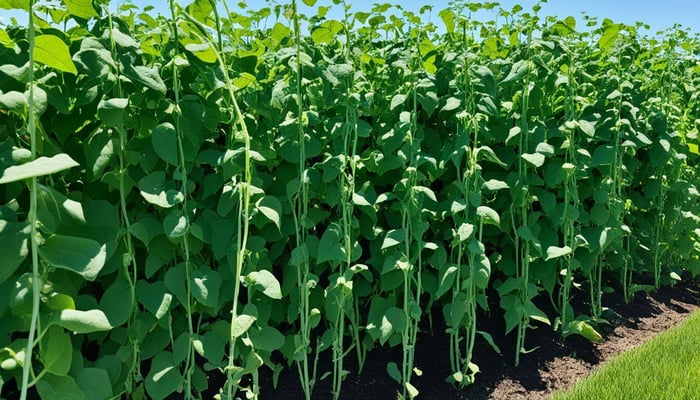Hello fellow gardeners! As a passionate gardener, I am excited to share my comprehensive guide on how to grow green beans from seed. Green bean plants are a delightful addition to any vegetable garden. Not only are they delicious and nutritious, but they are also easy to grow and highly rewarding. So let's dive in and learn how to grow green beans together!
Table of Contents
- Introduction to Green Beans
- Choosing the Right Green Bean Variety
- Plant Characteristics
- Planting Green Beans: When, Where, and How
- Caring for Your Green Bean Plants
- Common Pests and Diseases
- Harvesting Green Beans
- Storing and Preserving Green Beans
Introduction to Green Beans
Green beans, also known as snap beans or string beans, belong to the legume family and are native to Central and South America. They are popular with many gardeners due to their fast-growing nature, high yield, and relatively low maintenance. Green beans can be grown in various climates and adapt well to different soil types. This article will explore how to grow green beans from heirloom seed packets, the differences between bush beans and pole beans, and how to ensure a bountiful harvest.
Bush Tendergreen Bean Seeds
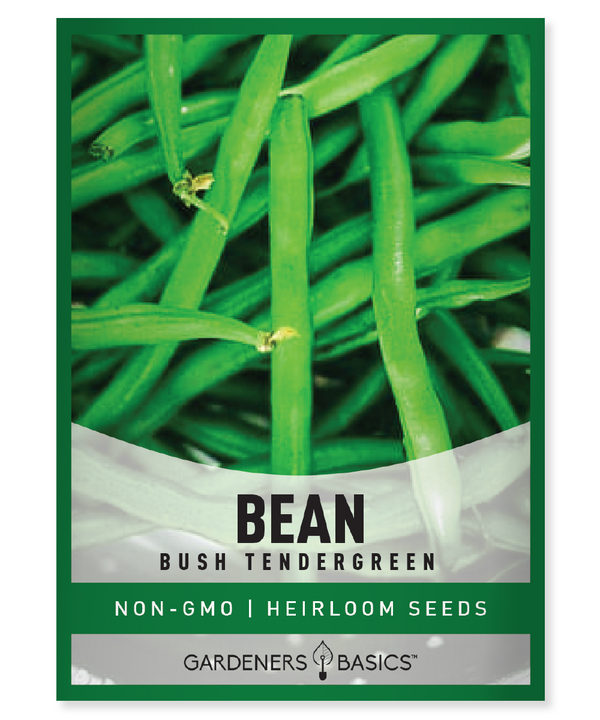
$2.49
Bush Tendergreen Bean Seeds - Heirloom, Non-GMO, High-Yield, Stringless Green Beans Grow your garden with Bush Tendergreen Bean seeds, a classic heirloom variety known for its tender, stringless pods and robust flavor. Our non-GMO, non-hybrid, open-pollinated seeds ensure you’ll enjoy reliable… read more
Choosing the Right Green Bean Variety
Before planting, choosing a suitable variety of green beans for your garden is essential. There are two main types of green bean plants: bush beans and pole beans. When deciding which type of green bean seed to plant, consider the following:
-
Bush Beans: These are compact plants that do not require support. They typically grow 1-2 feet tall and mature faster than pole beans. Planting bush beans is ideal for small gardens or raised beds.
-
Pole Beans: These vining plants require a support structure like a trellis or pole. They grow 5-10 feet tall and produce beans throughout the season. Pole beans are perfect for gardeners looking to maximize their harvest in a limited space.
Plant Characteristics
Here's a quick overview of green bean plant characteristics:
- Native: Central and South America
- Family: Leguminosae
- History of the Seed: Brought to Europe in the 16th century and later introduced to North America
- Days till maturity: 50-70 days for bush beans; 55-75 days for pole beans
- Planting depth: 1-1.5 inches
- Plant spacing: 3-6 inches apart for bush beans; 6-12 inches apart for pole beans
- Days to germination: 8-16 days
- Start indoors or direct sown: Direct sown is preferred
- Full sun or partial shade: Full sun
- When to harvest: When beans are firm, crisp, and 4-6 inches long
- Plant height: 1-2 feet tall for bush beans; 5-10 feet tall for pole beans
- Plant width: 1-3 feet wide for bush beans; 2-3 feet wide for pole beans
Planting Green Beans: When, Where, and How
When to Plant Green Beans
Green beans should be planted after the danger of frost has passed. To determine the best planting time, find your area's average last frost date and plan to plant seeds about two weeks after this date. You can also plant a second crop in mid-summer for a continuous harvest throughout the growing season.
Kentucky Blue Pole Bean Seeds
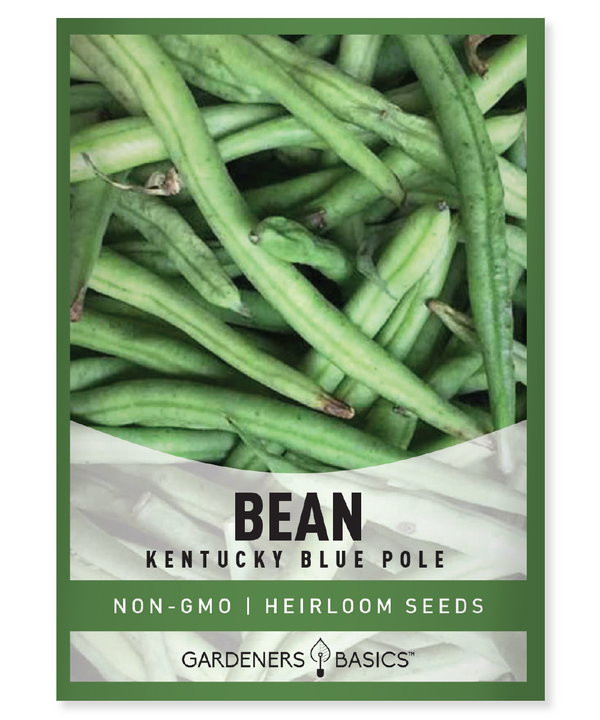
$2.49
Kentucky Blue Pole Bean Seeds - Heirloom, Non-GMO, Non-Hybrid, Open-Pollinated Discover the superior quality of Kentucky Blue Pole Bean seeds, perfect for gardeners seeking productive, vigorous climbing beans with exceptional flavor. Our heirloom, non-GMO, non-hybrid, open-pollinated seeds ensure a reliable… read more
Where to Plant Green Beans
Choose a location in your vegetable garden that receives full sun for at least 6 hours daily. Green beans prefer well-draining soil with a pH between 6.0 and 6.5. If you are planting pole beans, provide a support structure, such as a trellis, plant pole, or fence.
How to Plant Green Beans
-
Prepare the soil: Loosen the soil to a depth of 12-18 inches and mix in compost or aged manure to improve fertility and drainage.
-
Plant seeds: Plant seeds at a depth of 1-1.5 inches. For bush beans, space seeds 3-6 inches apart in rows 18-24 inches apart. For pole beans, space seeds 6-12 inches apart along the support structure, with rows 30-36 inches apart.
-
Water: After planting, water the seeds well. Keep the soil consistently moist but not waterlogged during germination.
-
Thin seedlings: Once the seedlings have emerged and have at least two sets of leaves, thin them to the recommended spacing. This helps to promote better airflow and reduce competition for nutrients.
Caring for Your Green Bean Plants
Watering
Green beans are shallow-rooted, requiring about 1 inch of water per week. Water at the base of the plant keeps the foliage dry, reducing the risk of diseases. Mulching around the plants can help retain moisture and suppress weeds.
Fertilizing
Since green beans are legumes, they can fix nitrogen from the air and typically do not require additional fertilization. However, if your soil is low in nutrients, you can apply a balanced, slow-release fertilizer at planting time.
Weeding
Keep the area around your green bean plants weed-free, as weeds can compete for nutrients and water. Be gentle when weeding near the plants, as their shallow roots can be easily disturbed.
Common Pests and Diseases
Green beans can be affected by several pests and diseases, including:
- Aphids: Small insects that can cause yellowing leaves and stunt growth. Treat with insecticidal soap or neem oil.
- Japanese Beetles: These beetles can defoliate plants. Handpick them off, or use a floating row cover to protect your plants.
- Bean Rust: A fungal disease causing orange pustules on leaves. Remove affected leaves and avoid overhead watering.
- Powdery Mildew: A fungal disease causing a white, powdery coating on leaves. Improve air circulation and apply a fungicide if necessary.
Harvesting Green Beans
Begin harvesting green beans when firm, crisp, and about 4-6 inches long. To harvest, gently snap or cut the beans from the plant without damaging the stem. Harvest regularly to encourage more bean production. Be sure to harvest before the beans become too large and tough.
Storing and Preserving Green Beans
After harvesting green beans, store them in the refrigerator for up to a week. You can blanch and freeze the beans or preserve them through canning or pickling for longer storage.
Now that you completely understand how to grow green beans from seed, you can enjoy a bountiful harvest of these delicious vegetables throughout the growing season. Happy gardening!

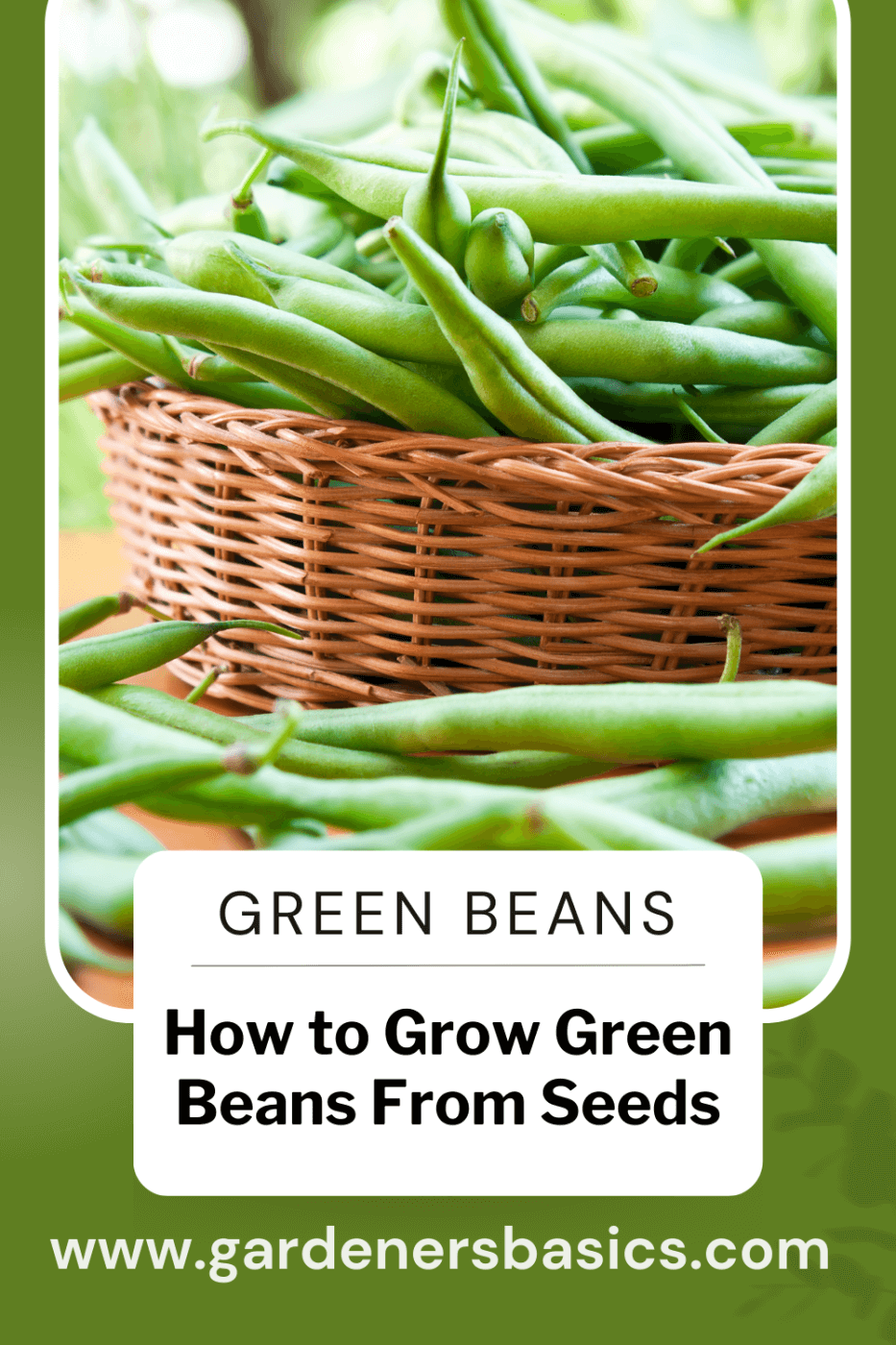 Frequently Asked Questions - How to Grow Green Beans from Seed
Frequently Asked Questions - How to Grow Green Beans from Seed
1. Can I grow green beans in containers?
Green beans can be grown in containers, especially bush bean varieties. Choose a container at least 12 inches deep and 18-24 inches wide. Ensure the container has drainage holes and is filled with high-quality potting mix. Pole beans can also be grown in containers, but be sure to provide a support structure.
2. How many green bean plants should I grow per person?
On average, you can expect to harvest about 10-15 pounds of green beans per 10-foot row of bush beans or per 10 feet of pole beans. To provide enough green beans for fresh eating for one person, plant 10-15 feet of row or pole beans. If you plan to preserve green beans, consider planting more.
3. Do green beans need to be pollinated?
Green beans are self-pollinating, meaning they do not require the help of insects or other pollinators to produce beans. However, attracting pollinators like bees to your garden can still benefit your vegetable garden's overall health and productivity.
4. How long does it take for green beans to grow from seed?
The time it takes for green beans to grow from seed to harvest depends on the variety. Bush beans typically mature in 50-70 days, while pole beans take 55-75 days. Check your seed packet for the specific days to maturity for the variety you are growing.
5. Why are my green beans not producing?
Several factors can contribute to poor green bean production, including insufficient sunlight, over-fertilization, poor pollination, or pest/disease issues. Ensure your green bean plants receive at least 6 hours of full sun daily, avoid over-fertilizing, and monitor for pests and diseases.
 6. Can I grow different varieties of green beans together?
6. Can I grow different varieties of green beans together?
Yes, you can grow different varieties of green beans together in your garden. However, remember that some types may grow taller or wider than others, so provide adequate spacing between plants. Also, if you're saving seeds for the next season, consider planting different varieties farther apart to minimize the risk of cross-pollination.
7. Are green beans annuals or perennials?
Green beans are annual plants, which means they complete their life cycle in one growing season. You must plant new seeds each year to enjoy a fresh harvest of green beans.
8. Can I save seeds from my green bean plants for next year?
You can save seeds from your green bean plants for planting the following year if they are heirloom seeds to begin with. To do this, allow a few of your healthiest green bean pods to fully mature and dry on the plant. Once the pods are dry and brittle, remove them from the plant, shell the beans, and store them in a cool, dry place until the next planting season. If you're growing heirloom varieties, this is a great way to preserve the genetics of your favorite green beans.
9. Can I grow green beans from store-bought beans?
While it's technically possible to grow green beans from store-bought beans, it's not recommended. Store-bought beans may have been treated to prevent sprouting or may not be a true-to-type variety suitable for your region. For the best results, purchase fresh, high-quality seeds from a reputable seed supplier or garden center.
10. When should I stop harvesting green beans?
Stop harvesting green beans when the plants slow down production, the beans become too large and tough, or when frost is imminent. At the end of the growing season, you can remove the plants from your garden and add them to your compost pile.






